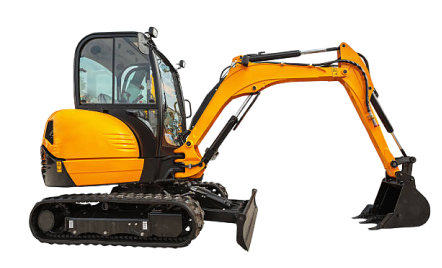The Expanding Pattern of Heavy Tools Rental in Different Sectors: Opportunities and Obstacles
The surge in heavy devices service throughout numerous sectors has emerged as a tactical reaction to progressing market needs, providing significant benefits such as improved expense performance and improved access to cutting-edge technology. This trend is not without its problems, including issues about equipment availability and quality standards.
Overview of Heavy Equipment Rental
The heavy equipment rental industry has actually experienced substantial development over the previous decade, with a market value forecasted to get to approximately $100 billion by 2025. This growth can be credited to a number of elements, including increased demand for construction tasks, climbing labor expenses, and the requirement for companies to conserve resources. Business progressively prefer renting out over acquiring devices to reduce ahead of time costs and maintenance prices, permitting them to assign resources better.
On top of that, technical developments have actually changed the rental landscape, enabling companies to supply a wider range of customized equipment while boosting functional effectiveness. These advancements consist of telematics and digital systems that enhance tools tracking, upkeep scheduling, and client service.
Moreover, the international push in the direction of sustainability has triggered many firms to take on rental models, as they can access contemporary, energy-efficient equipment without the long-lasting dedication of ownership. This pattern is particularly appropriate as organizations seek to abide by stricter ecological policies and lower their carbon footprints.
Secret Sectors Embracing Rental Solutions
Welcoming the flexibility and cost-effectiveness of rental services, numerous sectors are progressively transforming to hefty equipment leasings to fulfill their functional needs. The building sector leads this pattern, making use of rental solutions to gain access to specialized equipment without the economic concern of long-lasting ownership - mini excavator rental. This permits more vibrant job monitoring and the capacity to range sources based upon need
In addition, the production field is taking on rental solutions to boost manufacturing capacities without devoting to capital-intensive acquisitions. By renting out tools, manufacturers can quickly adapt to market fluctuations and technical advancements, guaranteeing they continue to be affordable.
The power market, specifically in sustainable power jobs, is likewise leveraging heavy equipment rentals. This strategy promotes the fast mobilization of equipment for short-term projects, such as wind ranch installments or photovoltaic panel configurations, while minimizing in advance prices.
In addition, the landscape design and agriculture sectors are identifying the benefits of leasings for seasonal needs. By leasing equipment, these sectors can efficiently take care of procedures throughout top durations without excess financial investment in machinery that may continue to be idle for much of the year. Overall, these vital markets show the growing approval of heavy tools leasings as a tactical functional option.
Advantages of Renting Devices
Various benefits come with the choice to rent heavy equipment, making it an appealing alternative for businesses across different markets. Among the key advantages is set you back performance. Renting out eliminates the need for significant capital expense, enabling business to designate sources better. This is specifically useful for tiny to medium-sized ventures that might encounter spending plan restraints.
In addition, renting out devices offers access to home the most recent modern technology and equipment without the concern of ownership. As suppliers continually innovate, businesses can profit from sophisticated devices that boosts productivity and safety. boom lift rental. This accessibility likewise includes a varied series of specialized equipment tailored to details job requirements
An additional key benefit is the flexibility that rental arrangements provide. Firms can quickly scale their tools requires up or down based upon job needs, avoiding overcapacity and underutilization. In addition, rental business usually offer maintenance and assistance solutions, eliminating businesses of the obligation for maintenance and repair work.

Difficulties in Heavy Equipment Rental
Browsing the heavy tools rental landscape provides numerous difficulties that businesses have to think about. In addition, the varying top quality of rental devices poses a considerable concern.
In addition, rental scaffolding equipment for sale contracts can be intricate, typically containing concealed fees and uncertain terms that might result in disagreements. Companies should spend time and resources in completely recognizing these contracts to prevent possible mistakes. One more challenge is the requirement for skilled operators. Renting out equipment without skilled personnel can result in ineffective usage, accidents, and further expenses.
Last but not least, fluctuating market conditions can influence rental rates, making budgeting and monetary forecasting harder for businesses. These challenges necessitate careful planning and calculated partnerships within the rental market to make sure that business can successfully browse the intricacies of heavy devices leasing while optimizing productivity and reducing prices.
Future Fads and Factors To Consider
As the heavy devices rental industry advances, numerous crucial patterns are emerging that companies must take into consideration to continue to be affordable. One of the most substantial patterns is the growing adoption of modern technology, especially telematics and IoT-enabled devices. These developments allow for real-time surveillance of devices performance, bring about enhanced maintenance timetables and improved operational performance.
Furthermore, sustainability is becoming a main emphasis, with an enhancing variety of business seeking eco-friendly tools choices and practices. This change not only fulfills regulative needs however also straightens with business social responsibilities.
Additionally, the rise of shopping platforms for tools rental services is changing customer communications. Companies have to purchase user-friendly on the internet systems that assist in seamless purchases and give detailed item information.
Conclusion

To conclude, the enhancing reliance on hefty equipment rental across various sectors highlights its prospective to boost functional effectiveness and lower costs. Nonetheless, obstacles such as devices schedule, top quality inconsistencies, and complicated rental contracts need to be dealt with to totally utilize the benefits of this version. By proactively dealing with these problems, markets can maximize source management and foster an extra sustainable method to hefty devices utilization, eventually driving growth and technology in a developing market.
The rise in hefty devices rental across different industries has actually emerged as a critical feedback to advancing market needs, using significant advantages such as boosted expense performance and improved access to cutting-edge modern technology.Accepting cheap excavators the adaptability and cost-effectiveness of rental services, numerous sectors are increasingly transforming to hefty equipment leasings to fulfill their functional needs. Generally, these essential markets show the expanding approval of heavy devices leasings as a critical functional option.
Browsing the hefty devices rental landscape offers several challenges that companies need to think about.In verdict, the boosting dependence on hefty devices leasing across various markets highlights its potential to boost operational effectiveness and minimize costs.
 Daniel Stern Then & Now!
Daniel Stern Then & Now! Kirk Cameron Then & Now!
Kirk Cameron Then & Now! Michelle Pfeiffer Then & Now!
Michelle Pfeiffer Then & Now! Richard "Little Hercules" Sandrak Then & Now!
Richard "Little Hercules" Sandrak Then & Now! Gia Lopez Then & Now!
Gia Lopez Then & Now!